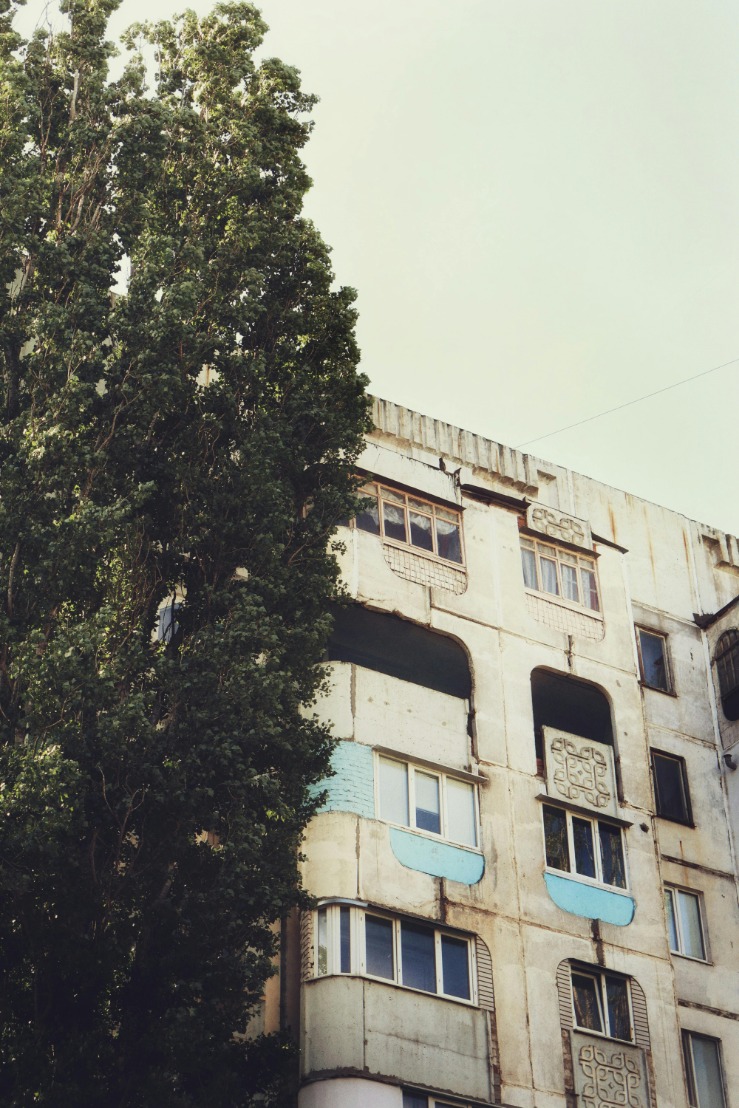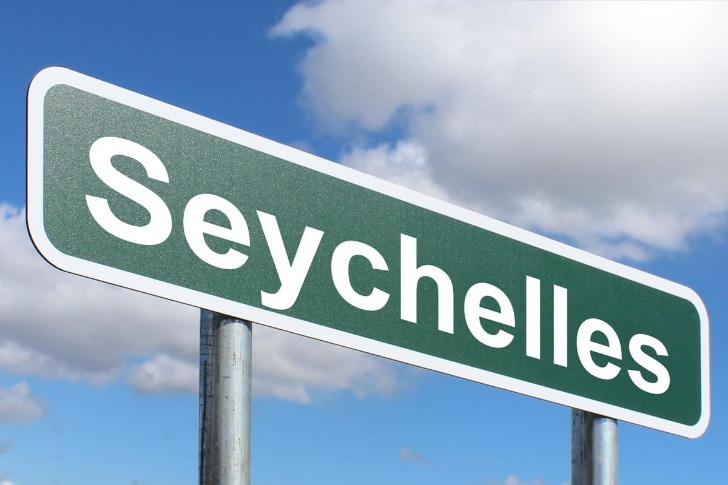Overview of Cost of Living in Seychelles
The cost of living in Seychelles offers a unique blend of affordability and luxury, influenced by its island lifestyle and remote location. Residents and travelers alike experience varying expenses related to housing, food, transportation, and entertainment. Understanding the overall costs is essential for those considering moving to or visiting this tropical paradise, as it reflects the balance between the picturesque setting and the economic realities of life on these stunning islands.
Factors Influencing Living Costs
The cost of living in Seychelles is influenced by various factors that reflect the country’s unique economic and geographic characteristics. As a popular tourist destination and a remote island nation, Seychelles tends to have higher prices for imported goods and luxury items, which significantly affects overall living expenses. The relatively high cost of housing, transportation, and dining out contributes to the elevated cost of living for residents and expatriates.
Several key factors influence the living costs in Seychelles. Firstly, the dependence on imports for daily necessities, including food, clothing, and fuel, increases prices due to shipping and logistics expenses. Secondly, the limited local agricultural and manufacturing industries mean that many goods are not produced domestically, further driving up costs. Thirdly, the tourism-driven economy supports a luxury lifestyle, resulting in higher prices for services and accommodations.
Additionally, the level of income and standard of living significantly impact affordability. While some essentials may be pricey, local residents with higher income levels can manage costs more effectively. Factors such as housing costs, which vary between urban and rural areas, and transportation expenses due to limited public transit options, also shape the overall economic landscape. Understanding these factors provides a comprehensive view of what to expect regarding expenses in Seychelles and helps in planning for a comfortable lifestyle on the islands.
Comparison with Other Island Nations
The cost of living in Seychelles varies considerably depending on lifestyle, location, and consumption habits. Generally, living expenses are higher than many other island nations due to its remote location, import reliance, and luxurious lifestyle options. Essential commodities, housing, and imported goods tend to be expensive, making daily expenses relatively high for residents and expatriates alike.
Compared to other island nations such as Mauritius, Bali, or the Maldives, Seychelles ranks higher in overall living costs. Mauritius, for example, offers a more affordable cost of living with cheaper housing and food options, whereas Bali provides budget-friendly accommodation and amenities. The Maldives, similar to Seychelles, has a high cost of imported goods and luxury accommodations, resulting in comparable expenses. Seychelles’s exclusivity and limited local production contribute to its elevated prices, especially in sectors like transportation, healthcare, and dining out.
While Seychelles offers breathtaking scenery and a luxurious lifestyle, the high costs may be a barrier for some. Residents often need to budget carefully, especially when it comes to imported goods and private housing. Nonetheless, the island nation continues to attract expatriates and tourists seeking natural beauty and tranquility despite the associated living expenses.
Recent Trends and Economic Changes
The cost of living in Seychelles is generally higher compared to many other African nations, largely due to its remote island location and reliance on imports for most goods and services. Expenses related to housing, transportation, and daily necessities tend to be significant, making it an expensive destination for both residents and visitors.
Recent trends indicate a gradual rise in the cost of living, driven by inflation, increased tourism, and economic adjustments. The government has undertaken efforts to stabilize prices, but inflationary pressures, especially on imported goods, continue to influence overall expenses.
Economic changes such as shifts in tourism demand, currency fluctuations, and shifts in global commodity prices have also impacted costs. The Seychelles economy remains sensitive to external factors, which can lead to fluctuations in prices of essential goods and services, affecting the standard of living for its residents.
Housing and Accommodation Expenses
Housing and accommodation expenses are a significant component of the overall cost of living in the Seychelles. As an island nation known for its stunning beaches and diverse landscapes, the country offers a range of housing options that vary in price depending on location, size, and type. Understanding these costs is essential for residents and visitors alike, as they impact budgeting and quality of life in this unique and picturesque setting.
Rental Prices in Urban Areas
Housing and accommodation expenses are a significant component of the overall cost of living in Seychelles, particularly in urban areas such as Victoria and the surrounding cities. Rental prices in these regions tend to be higher compared to rural parts of the islands, reflecting the demand for conveniently located housing and urban amenities.
In urban areas of Seychelles, the cost of renting a one-bedroom apartment can range from approximately $300 to $700 per month, depending on factors such as location, size, and the level of comfort. Larger apartments or houses with multiple bedrooms are priced higher, often between $800 and $1,500 or more per month. These prices are influenced by proximity to commercial centers, beaches, and transportation options.
Overall, rental prices in Seychelle’s urban zones are competitive relative to many other island nations, but they still represent a significant portion of household expenses for residents. Affordability varies based on income levels, with expatriates and locals sometimes facing different rental market experiences. Understanding these costs is essential for anyone planning to move or live in Seychelles, as housing prices significantly impact the total expense of living on the islands.
Average Property Purchase Costs
Housing and accommodation expenses in the Seychelles vary depending on the location and type of property. In general, rental prices for apartments in urban areas like Victoria tend to be higher, while more rural regions offer more affordable options. Monthly rental costs can range from approximately $500 to $2,000, depending on size and amenities.
The average property purchase costs in the Seychelles also differ significantly based on the location, size, and property type. For a standard apartment or small house, prices typically start around $100,000 and can go up to $400,000 or more for luxury villas situated in prime areas or beachfront locations. Expensive real estate in popular tourist regions or exclusive neighborhoods may exceed these figures, reflecting the high demand and limited land availability.
Utilities and Maintenance Fees
The cost of living in the Seychelles includes various expenses related to housing and accommodation, utilities, and maintenance fees. Residents and visitors should be prepared for relatively high costs in these areas due to the island nation’s remote location and import-dependent economy. Housing options range from renting apartments and villas to purchasing properties, with prices varying depending on location and size. Utilities such as electricity, water, and internet tend to be costly, reflecting the challenges of infrastructure and energy supply on the islands. Maintenance fees for properties, especially in gated communities or resort-style developments, can add to ongoing expenses, covering security, landscaping, and shared services. Overall, these costs contribute significantly to the monthly expenses of living or staying in the Seychelles, making it essential for individuals to budget carefully when planning their stay.
Food and Groceries
Food and groceries are essential components of daily life and significantly impact the cost of living in the Seychelles. With a diverse range of local and imported products, residents and visitors alike experience varying prices depending on availability and supply chains. Understanding the costs associated with purchasing food can help individuals plan their budgets and make informed choices while living or traveling in this beautiful island nation.
Cost of Dining Out
The cost of dining out in the Seychelles varies depending on the type of restaurant and location. Budget-friendly eateries and local markets offer affordable options, with meals typically costing around $5 to $15. In contrast, mid-range restaurants may charge between $20 to $50 per person for a three-course meal, reflecting the island’s tourism-driven economy. High-end dining establishments, especially those catering to tourists, can be substantially more expensive, with prices exceeding $70 per person. Overall, while dining out in the Seychelles can be affordable if opting for local cuisine and casual spots, visitors seeking international or luxury experiences should budget accordingly as prices tend to be higher compared to other regions.
Grocery Prices and Local Markets
The cost of living in Seychelles is influenced significantly by food and grocery expenses, which form a major part of household budgets. Local markets and grocery stores offer a variety of fresh produce, seafood, and essential goods, often at competitive prices compared to imported items. Prices for staples such as rice, fruits, vegetables, and meat tend to vary depending on the season and availability, with local markets providing more affordable options for residents and visitors alike. Additionally, purchasing from local markets not only supports small-scale farmers and fishermen but also ensures fresher products at lower costs. Overall, grocery prices in Seychelles can be moderate when buying locally, but imported goods tend to be pricier, impacting the overall cost of daily living in the country.
Imported vs. Local Food Expenses
Food and groceries play a significant role in the overall cost of living in the Seychelles, with a notable distinction between imported and local food expenses. Consumers often face higher prices for imported goods due to transportation, taxes, and import duties, which can significantly increase household budgets. Conversely, locally produced foods tend to be more affordable and are generally fresher, supporting local farmers and reducing transportation costs.
- Imported Food Expenses: Typically higher due to shipping costs, tariffs, and import taxes. Common imported items such as processed foods, cereals, and certain beverages tend to be pricier, impacting families’ food budgets.
- Local Food Expenses: Usually more economical since they don’t incur import costs. Staples like fresh fish, fruits, vegetables, and locally grown products are generally cheaper and readily available, helping residents save money.
- Impact on Cost of Living: The reliance on imported foods can contribute to overall higher living costs, especially during periods of global supply chain disruptions. Promoting local food consumption can help alleviate some financial pressure on households.
Transportation Costs
Transportation costs play a significant role in the overall cost of living in the Seychelles, an island nation known for its stunning landscapes and vibrant culture. These expenses influence daily life, affecting how residents and visitors access goods, services, and transportation options across the islands. Understanding the factors behind transportation costs can provide valuable insights into the economic landscape of the Seychelles.
Public Transportation Fares
Transportation costs, including public transportation fares, are an important aspect of the overall cost of living in the Seychelles. Public transport options such as buses offer affordable travel within urban areas, making it accessible for residents and visitors alike. The fares for buses are generally reasonable, allowing for economical daily commuting choices. However, for those who prefer private transportation, costs such as fuel, vehicle maintenance, and insurance can add significantly to monthly expenses. Understanding these costs helps individuals budget effectively and navigate the transportation system efficiently in the Seychelles.
Owning and Maintaining a Vehicle
Transportation costs and the expenses associated with owning and maintaining a vehicle significantly impact the overall cost of living in the Seychelles. Owning a vehicle involves initial purchase prices, which can be high due to import duties and taxes on automobiles. Additionally, ongoing costs such as fuel, insurance, registration fees, and maintenance contribute to the financial burden. Fuel prices in the Seychelles tend to be higher than in many other countries, owing to import dependencies, which increases the expense of regular travel. Maintenance and repairs may also be costly because of limited local resources and the need for imported parts. For residents, many opt for public transportation or shared services to reduce costs, but those who own vehicles face substantial ongoing expenses that make transportation a notable component of living costs in this island nation.Overall, managing transportation expenses is a critical aspect of budgeting for daily life in the Seychelles, influencing the overall affordability for residents and visitors alike.
Fuel Prices and Availability
Transportation costs, fuel prices, and availability play a significant role in the overall cost of living in the Seychelles. The island nation’s remote location and reliance on imported fuel influence transportation expenses for residents and businesses alike.
- Fuel prices in the Seychelles tend to be higher compared to many other countries due to import costs and taxes, impacting the costs of daily commuting and goods transportation.
- The limited availability of fuel at certain times or locations can occasionally cause disruptions, leading to increased prices and reduced access for consumers.
- Public transportation options are relatively limited, making residents more dependent on private vehicles, which further elevates transportation expenses.
- The cost of transporting goods from overseas to the islands also contributes to higher prices for imported products and affects the overall cost of living.

Overall, the high fuel prices and transportation expenses are key factors influencing the affordability of living in the Seychelles, especially for those relying on personal vehicles and imported goods. Efforts to improve fuel availability and explore sustainable transport solutions could help mitigate some of these costs in the future.
Healthcare and Insurance Expenses
Healthcare and insurance expenses are important aspects to consider when evaluating the cost of living in the Seychelles. These costs can significantly impact overall financial planning and affordability for residents and expatriates alike. Understanding the expenses associated with medical services and insurance coverage helps individuals betterprepare for the health-related needs while living in this island nation.
Public Healthcare Costs
The cost of living in the Seychelles is significantly impacted by healthcare and insurance expenses, as access to quality medical services is vital for residents and visitors alike. Public healthcare costs in the country are relatively affordable, thanks to the government’s efforts to provide essential health services to its population. Seychelles offers a comprehensive public healthcare system that aims to reduce financial barriers, making medical treatment accessible to all citizens. However, individuals still často seek private insurance options to cover additional costs or specialized treatments not fully covered by public facilities. Overall, while healthcare expenses are managed to support public health, those residing in or visiting the Seychelles should budget for medical insurance to ensure comprehensive coverage amidst the country’s increasing healthcare demands.
Private Medical Services and Insurance
The cost of living in the Seychelles can be significantly affected by healthcare and insurance expenses, especially for residents and expatriates. Access to quality healthcare often requires private medical services, which tend to be more costly than public options, but provide faster and more specialized care. Insurance plays a crucial role in managing these expenses, as many individuals opt for private health insurance plans to cover hospital stays, medical consultations, and prescription medications. The overall healthcare costs in Seychelles are influenced by the availability of private facilities, the extent of coverage provided by insurance policies, and the need for international medical evacuation in case of serious health issues. Consequently, understanding the balance between private medical services and insurance coverage is essential for those living in or relocating to the Seychelles to effectively manage their healthcare expenses within the affordable threshold of their overall cost of living.
Medication and Pharmaceuticals Pricing
The cost of living in the Seychelles is significantly influenced by healthcare and insurance expenses, medication, and pharmaceuticals pricing. Residents and expatriates often face high costs due to limited local production of pharmaceuticals and reliance on imported medical supplies, which increases prices. Health insurance premiums also tend to be elevated, reflecting the high cost of medical services and limited healthcare infrastructure. Medication pricing can vary, but overall, essential drugs and pharmaceuticals are often more costly compared to other regions, contributing to the overall expense of maintaining health and well-being in the islands. These factors make healthcare a notable component of the living costs in the Seychelles, impacting residents’ budgets and access to quality medical care.
Education Expenses
Education expenses are a significant aspect of the overall cost of living in the Seychelles, affecting families and individuals moving to or residing in this island nation. Understanding the costs associated with schooling, from primary education to higher studies, is essential for planning and budgeting in this tropical paradise. These expenses can vary based on whether one chooses public or private institutions, and they play a crucial role in the financial considerations of living in the Seychelles.
School Fees (Local vs. International Schools)
Education expenses, particularly school fees, are a significant component of the cost of living in the Seychelles. When considering local versus international schools, there are notable differences in costs, standards, and curricula offered. Local schools tend to have lower tuition fees and are often government-funded or subsidized, making education more affordable for residents. In contrast, international schools usually charge higher fees due to their diverse curricula, use of expatriate teachers, and premium facilities, catering primarily to the expatriate community and affluent residents. Families living in Seychelles must evaluate their budget, educational preferences, and long-term plans when choosing between local and international options. While international schools offer programs such as British, American, or IB curricula, local schools provide education aligned with the Seychelles national standards. Overall, the decision impacts monthly expenses significantly, and prospective residents should factor these costs into their overall living budget in the Seychelles.
Higher Education and University Costs
Education expenses, particularly higher education and university costs, are important considerations when evaluating the overall cost of living in Seychelles. The country offers various opportunities for tertiary education, with several local universities and international institutions present. However, the cost of university tuition can be significant, often reflecting the quality of education and facilities provided. Students planning to study in Seychelles should account for tuition fees, which may vary depending on the program and institution, as well as additional expenses such as textbooks, supplies, and accommodation. While the government and some institutions may offer scholarships or financial aid, these opportunities are limited and highly competitive. Overall, prospective students and families should carefully budget for higher education expenses as part of their broader consideration of living costs in Seychelles, which also include housing, food, transportation, and other daily expenses.
Additional Education-Related Expenses
When considering the cost of living in Seychelles, education expenses represent an important aspect for residents and expatriates alike. These expenses include tuition fees for local and international schools, which can vary significantly depending on the institution and level of education. In addition, costs related to supplementary education, such as tutoring, extracurricular activities, and educational materials, contribute to the overall expenditure. Families planning to settle in Seychelles should budget for these additional education-related expenses to ensure access to quality education for their children. The country’s educational infrastructure offers a range of options, but the associated costs are an important consideration in the overall cost of living budget.
Entertainment and Leisure
Entertainment and leisure activities play a significant role in enhancing the quality of life, providing relaxation and enjoyment amid daily routines. In the Seychelles, a stunning island nation renowned for its picturesque beaches and vibrant culture, leisure options range from outdoor adventures to cultural experiences. Understanding the cost of entertainment and leisure is essential for residents and visitors alike to fully enjoy all that this tropical paradise has to offer while managing their expenses effectively.
Cost of Recreational Activities
The cost of recreational activities in the Seychelles varies depending on the type and location, but overall, they tend to be moderate compared to other popular tourist destinations. Visitors and residents can enjoy a range of entertainment options, from beach outings and water sports to cultural visits and outdoor adventures, often at affordable prices. Popular activities such as snorkeling, diving, and boat trips may have costs ranging from $20 to $100 per session, while entrance fees to parks and historical sites are generally around $5 to $15. Local cinemas, events, and festivals also provide entertainment at reasonable prices, making leisure activities accessible for different budgets. Keeping an eye on seasonal discounts and package deals can further help reduce costs, allowing everyone to enjoy the vibrant leisure scene of the Seychelles without overspending.
Tourism and Excursion Expenses
The cost of entertainment and leisure, including tourism and excursion expenses, significantly impacts the overall cost of living in the Seychelles. As a popular island destination, many residents and visitors allocate a considerable portion of their budget to activities such as island tours, snorkeling, diving, and exploring local attractions. These expenses vary depending on the type of activity, destination, and service providers, but they tend to be higher compared to other regions due to the remote location and premium quality of experiences offered. For residents, engaging in leisure activities can be more affordable if they opt for local events and community-based events, but tourists generally expect higher costs when participating in excursions or organized tours. Overall, entertainment and leisure expenses play an essential role in defining the lifestyle and budgeting considerations for both locals and visitors in the Seychelles, contributing to the higher cost of living associated with this tropical paradise.
Shopping and Cultural Events
The cost of living in the Seychelles is influenced significantly by entertainment, leisure activities, shopping options, and cultural events available to residents and visitors alike. Many enjoy relaxing on the pristine beaches, while others participate in water sports or explore local marine life, often incurring moderate costs for equipment rentals and guided tours. Shopping offers a mix of local markets and international stores, where prices can vary depending on the goods and location. Cultural events such as festivals, music performances, and art exhibitions provide rich entertainment options that are sometimes free or modestly priced, making them accessible to a wide range of budgets. Overall, leisure and entertainment activities can be tailored to different spending levels, contributing to the diverse lifestyle experiences in the Seychelles while maintaining manageable living costs for locals and tourists.
Impact of Currency Exchange Rates
The impact of currency exchange rates plays a significant role in shaping the cost of living in the Seychelles. Fluctuations in exchange rates can influence the prices of imported goods, travel expenses, and overall purchasing power for residents and visitors alike. Understanding these dynamics is essential for anyone looking to grasp the financial landscape of this island nation and how it affects daily life and economic stability.
Influence on Imported Goods
The impact of currency exchange rates significantly influences the cost of living in Seychelles, especially regarding imported goods. When the local currency depreciates against major currencies like the US dollar or euro, the cost of imported products, including food, fuel, and household items, tends to rise. This increase can lead to higher prices for consumers, making everyday essentials more expensive and putting additional strain on household budgets. Conversely, if the Seychelles rupee appreciates, the cost of imports may decrease, potentially easing living expenses. Overall, fluctuations in exchange rates directly affect the affordability of imported goods, shaping the overall cost of living in the country.
Effect on International Travel Costs
Currency exchange rates significantly influence the cost of living in the Seychelles, especially for international travelers. When the local currency, the Seychellois rupee, strengthens against major currencies like the US dollar or euro, travelers may find that their home currency stretches further, potentially reducing overall travel expenses. Conversely, if the Seychellois rupee weakens, costs for international travel, accommodations, and daily expenses tend to rise for foreign visitors. Fluctuations in exchange rates also impact the affordability of goods and services within the country, affecting residents and tourists alike, and play a crucial role in shaping the overall affordability of living and traveling in the Seychelles.
Strategies for Budget Management
The cost of living in Seychelles is significantly influenced by currency exchange rates, which can impact both residents and visitors. Fluctuations in the local currency, the Seychellois rupee, relative to major currencies like the US dollar or euro, can lead to increased costs for imported goods and services, affecting everyday expenses. When the Seychellois rupee depreciates, the price of imported products rises, making essentials such as food, fuel, and household items more expensive, thereby elevating the overall cost of living.
To manage these financial challenges, effective strategies for budget management are essential. Budgeting wisely involves planning expenses in advance, prioritizing necessary purchases, and monitoring currency exchange trends to make informed decisions. It is advisable to diversify income sources, especially if earning in a foreign currency, and to purchase goods during favorable exchange rate periods. Additionally, residents can reduce costs by seeking local alternatives, avoiding unnecessary imports, and taking advantage of discounts or bulk buying options.
Overall, staying aware of currency fluctuations and adopting prudent budget strategies can help individuals and families in Seychelles better navigate the economic impacts and mitigate increased living costs caused by exchange rate variability.





0 Comments